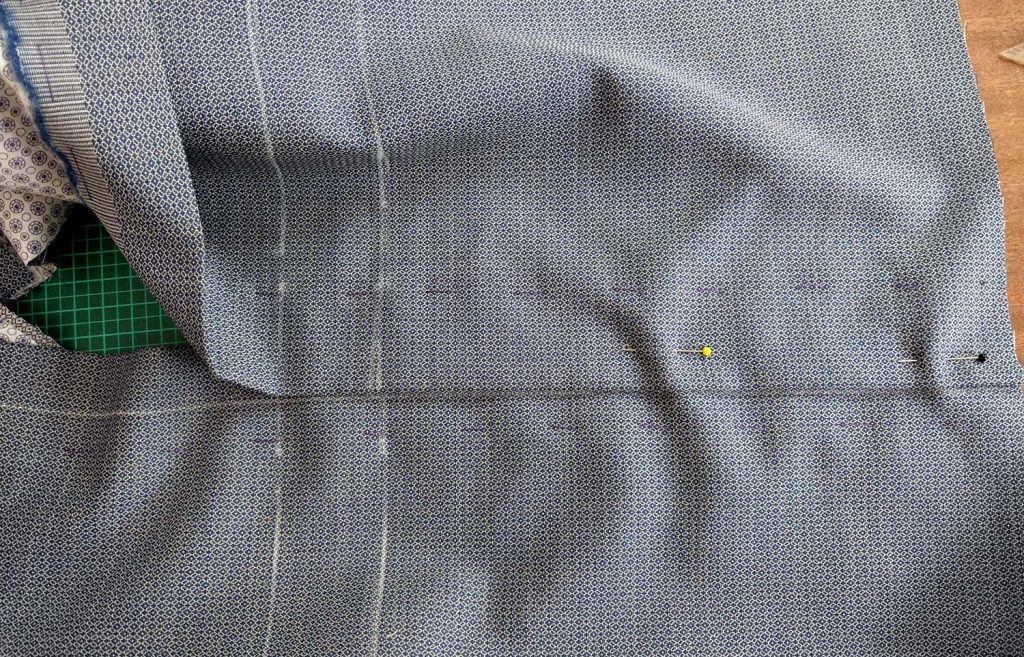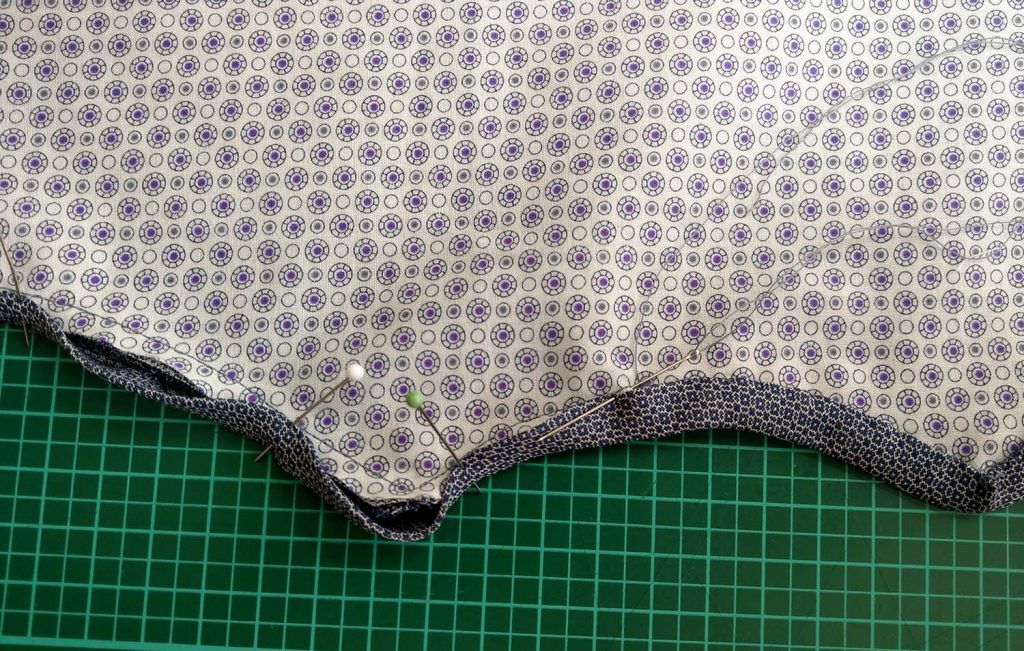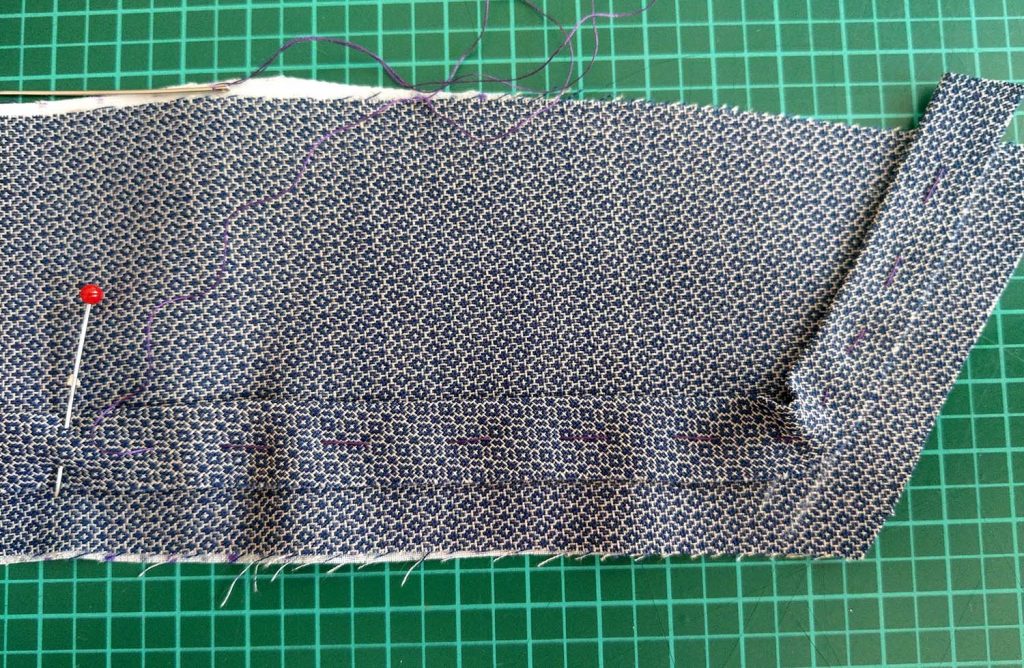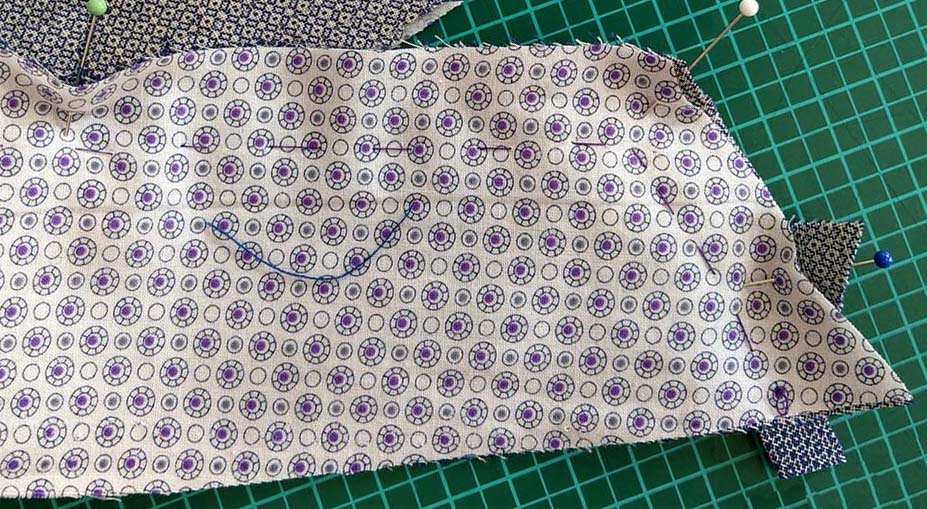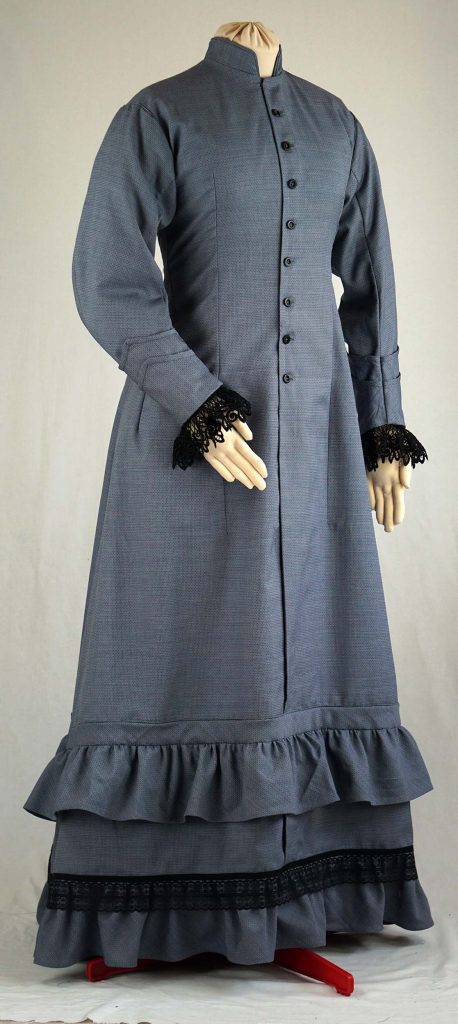It´s time to finish the dress and to close the center front. But first, mark all lines for flounces and appliques along the hemline on the right fabric side, mark half, quarter and eighth to match the marks on the flounce.

To close the center front below the button tab, place the left side on top, overlapping the right side. Baste along the left front edge from the right fabric side through all layers (pins), starting at the end of the button tab, ending at the hem. Turn the dress to the wrong side.
